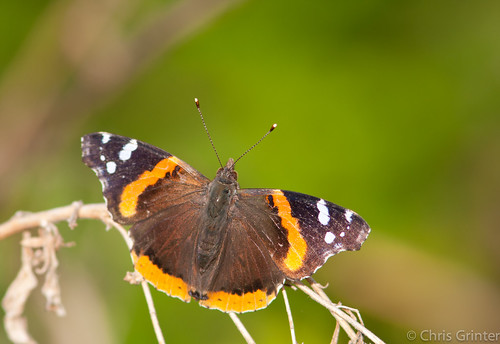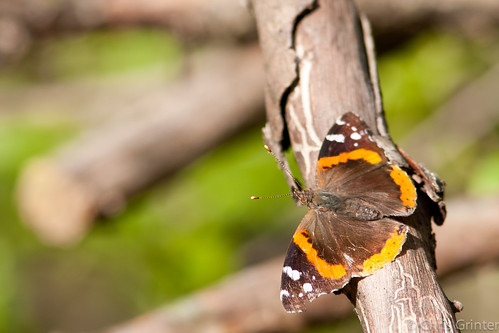O informativo local para a maioría de EEUU Oriental e no Canadá foi aflutter (ten) recentemente con informes da irrupción Vanessa Atalanta – a bolboreta Almirante vermello. Mentres esta é unha ocorrencia común cada primavera para estas bolboretas para migrar cara ao norte das súas terras overwintering no sur dos Estados Unidos, os números absolutos deste ano son sorprendentes. Hai literalmente miles de almirantes nos nosos quinteiros.
Entón, o que é diferente este ano?
Hai moita especulación sobre o tempo quente de primavera (máis quente de marzo no rexistro para moitos lugares) e moitas veces moita desinformación para ir xunto con algúns entomologia asento. A maioría das fontes de novas que eu vin transversalmente din que a primavera quente permitiu estas bolboretas para florecer e reproducirse en números anormais. Iso non é moi posible, con todo, O. Atalanta overwinters como un adulto. Os estados do sur proporcionar temps suficientes só a quente para adultos Vanessa bolboretas para esconderse na caída e ser o primeiro en espertar na primavera para obter un salto sobre a procreación. Aínda que as bolboretas estaban acordados en febreiro as plantas azafatas aínda non estaban up (cardos); as bolboretas nos nosos quinteiros son do ano pasado.
Pero e se o tempo o fixo xogar un papel neste ciclo de expansión? O ano pasado foi un ano de La Niña co noso inverno fermoso e lixeiro. O ano anterior foi un El Niño, a maioría de EEUU oriental foi agredido con inverno e nós sufriu nas mans do épico Chicago “snowpocalypse”. Quizais esa combinación deprimido números da poboación con suficiente 2010/2011 que, a continuación, diminuíu a carga parasitóide, permitindo unha maior fecundidade xeral bolboreta no verán de 2011. Esas bolboretas overwintering foron entón concedido un inverno quente que podería permitir unha mortalidade máis baixas no inverno. Como as bolboretas cara ao norte esta primavera non houbo noites xeadas de cortar en poboacións – só a moitos paxaros famentos. O resultado sería un fluxo anormal de bolboretas migratorias.
Pero, de novo…
Despite butterflies being so popular and well studied there doesn’t seem to be a perfect grip on what conditions each of the Vanessa species prefer. As variables de plantas azafatas, franxa de poboación, tempo e parasitóides, todo desempeñan papeis importantes na abundancia e distribución. Did the weather cycles of the last few years variably effect one species over another? Quenquera que o proxecto D. (do inferno)?
One of the best posts I’ve read is by Doug Taron over on Gossamer Tapicería – he is skeptical of this warm weather theory. Critically this irruption is effecting only the population of the Red Admiral and any theory involving weather would also likely effect other migrant butterflies like the Vanessa virginiensis – the American Lady. He also points out that an abundant butterfly like the admiral has classic cyclical population booms and busts in sync with parasite populations. I recall another summer in the late 90’s of staggering Admiral populations. Parasites really do better explain what we see in our yards this spring. While the weather might not have caused the abundance of O. Atalanta, there can be no denying that butterflies of all species have woken up much earlier this year.



As far as I recall, almost all temperate zone animals (and plants, Eu sospeito) go thru boom and bust cycles. It’s pretty much the function/nature of the wildly variable environmental conditions of the ecosystems. Even the less common temperate zone species cycle but the effects are less noticed simply because of the lower population levels.
must have been a lovely sight, vanessa atlanta has been struggling in the UK for the past few years!!
A few years back you may have heard about the painted lady invasion in the UK very much the same as the USA i was counting well over 1000 an hour coming up the field from the english channel !
Quick question about la nina i believe the later part of 2010 was also la nina thats why the UK and northern USA had such cold weather